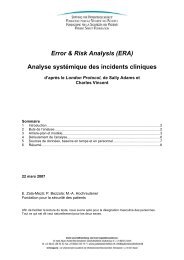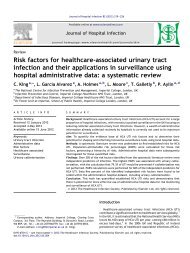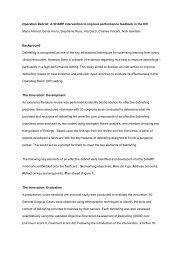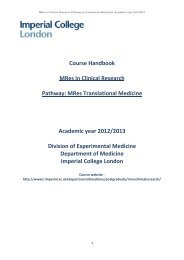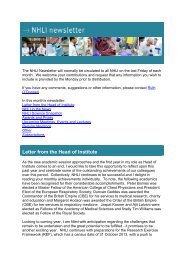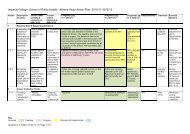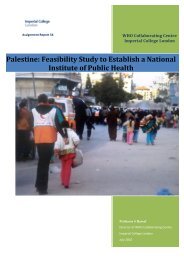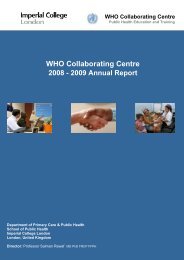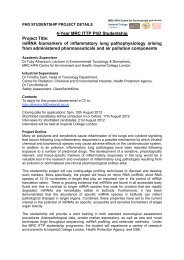An Introduction to qRT-PCR Assays Using Sybr Green (Using SDS ...
An Introduction to qRT-PCR Assays Using Sybr Green (Using SDS ...
An Introduction to qRT-PCR Assays Using Sybr Green (Using SDS ...
Create successful ePaper yourself
Turn your PDF publications into a flip-book with our unique Google optimized e-Paper software.
esult in dramatic differences in results. A 5% difference in <strong>PCR</strong> efficiency canresult in almost a twofold difference in expression after 25 cycles. If standardsamples and experimental samples do not exhibit comparable kinetics, thenequating cDNA samples with copy numbers determined from standards ismisleading. This is particularly true when comparing experimental cDNAsamples against purified nucleic acid preparations (eg: <strong>PCR</strong> product orplasmid preparations).As differences in RNA concentration, RNA quality and reversetranscription efficiency will also inevitably occur, an internal control istypically used <strong>to</strong> act as an RNA loading control (see below). As such, targetgene expression is normalised <strong>to</strong> internal control gene expression, and thisresults in a ratio of target gene <strong>to</strong> internal control, which is independent ofcopy number. For example, partial RNA degradation or poor RT efficiencywill both result in a reduced copy number, but will also result in acomparable decrease in internal control gene expression. As such, theexpression ratio of target <strong>to</strong> internal control will be the same.Are copy numbers essential within the context of your assay? In someassays, copy number may be meaningful, but in many cases it is not. <strong>An</strong>otherway of thinking about this is does a measurement of the number of copies perug of RNA tell you anything more about the sample? For example, in thecontext of viral loading, copies per ug of RNA is obviously important, but inthe context of expression of an inflamma<strong>to</strong>ry marker in the brain followinginjury copies per ug of tissue is not especially meaningful – what is of interestis whether the expression of the marker changes following injury.As such, if copy numbers are really required then they may becalculated from molar concentration based upon the molecular weight of theamplicon and Avagadro’s constant. However, as well as constructing anaccurate standard curve, it must be confirmed that standards and cDNAexperimental samples amplify comparably. Finally, it should be realised thatcopy number calculations are not absolute in the q<strong>PCR</strong> context - they are ofcourse only relative <strong>to</strong> the standard used, and thus depend upon how suitablethis standard is.b) Internal Controls (Housekeeping Genes)A recurring question when dealing with quantification of geneexpression is “what is the most suitable internal control?” This questionreflects both a commendable desire <strong>to</strong> accurately control gene expressionassays, but also highlights a desire <strong>to</strong> oversimplify this difficult issue. Firstly,there is no such thing as an ideal internal control. Whilst numerous internalcontrols are available, none is ideal for every scenario, and all haveadvantages and drawbacks.Internal controls function as a loading control <strong>to</strong> ensure thatcomparable amounts of RNA are being measured in each case. However, how



